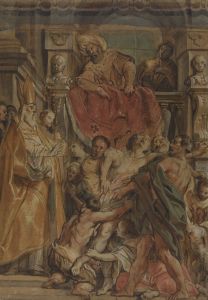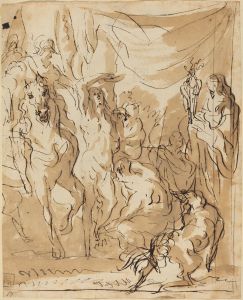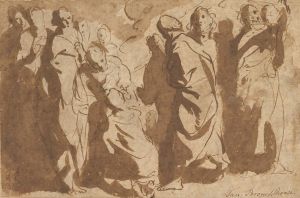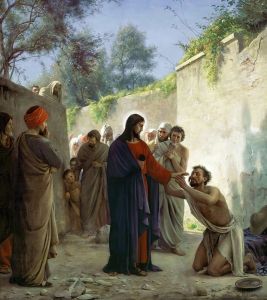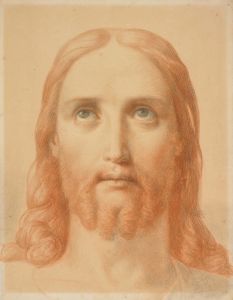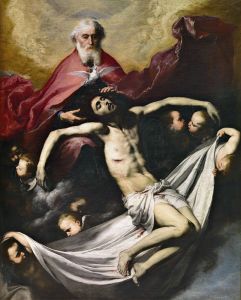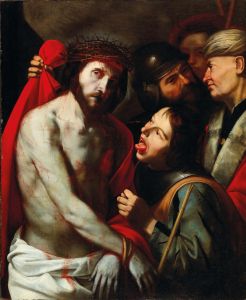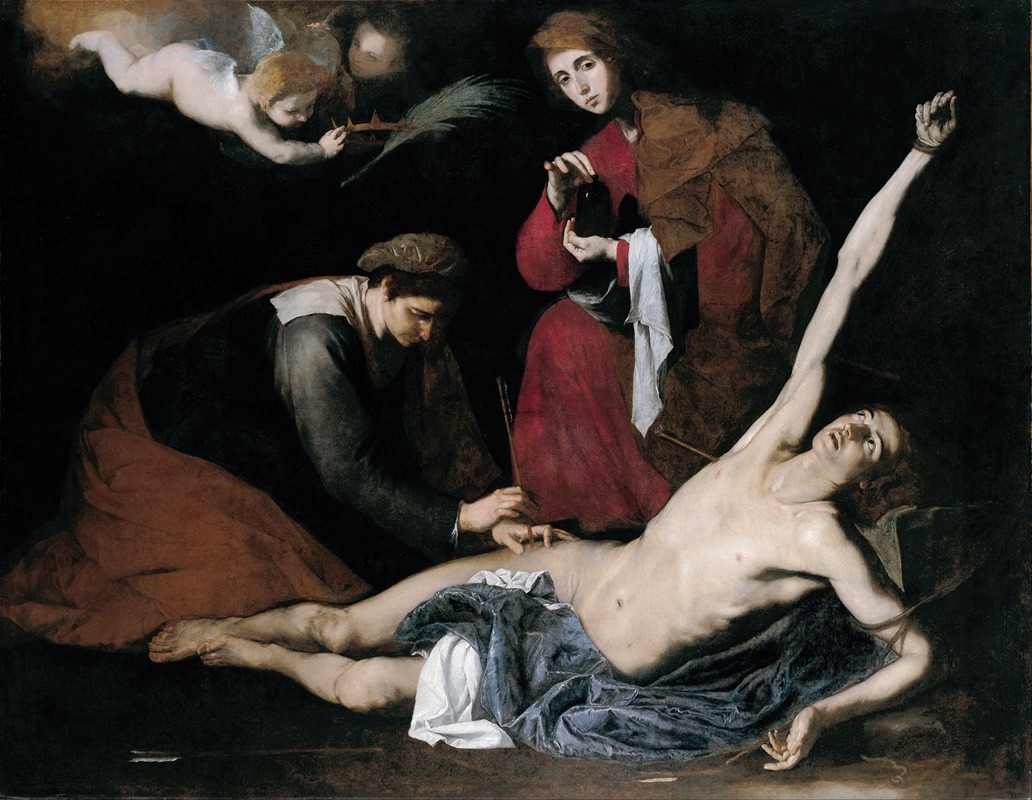
Saint Sebastian Tended By The Holy Women
A hand-painted replica of Jusepe de Ribera’s masterpiece Saint Sebastian Tended By The Holy Women, meticulously crafted by professional artists to capture the true essence of the original. Each piece is created with museum-quality canvas and rare mineral pigments, carefully painted by experienced artists with delicate brushstrokes and rich, layered colors to perfectly recreate the texture of the original artwork. Unlike machine-printed reproductions, this hand-painted version brings the painting to life, infused with the artist’s emotions and skill in every stroke. Whether for personal collection or home decoration, it instantly elevates the artistic atmosphere of any space.
Saint Sebastian Tended by the Holy Women is a painting by the Spanish Baroque artist Jusepe de Ribera, also known as José de Ribera. This work is one of several depictions of Saint Sebastian by Ribera, who was renowned for his dramatic use of chiaroscuro and his focus on intense emotional realism. The painting is believed to have been created in the 1620s, during Ribera's mature period when he was living and working in Naples, a city under Spanish rule at the time.
The painting portrays the aftermath of Saint Sebastian's martyrdom. According to Christian tradition, Saint Sebastian was a Roman soldier who converted to Christianity and was sentenced to death by being tied to a tree and shot with arrows. Although he survived this ordeal, he was later executed by being beaten to death. In Ribera's depiction, the scene focuses on the moment after Sebastian has been left for dead, as two compassionate women tend to his wounds. This subject allowed Ribera to explore themes of suffering, compassion, and redemption, which were central to the Counter-Reformation's emphasis on emotional engagement with religious imagery.
Ribera's mastery of naturalism is evident in the detailed rendering of the human body, particularly in the figure of Saint Sebastian. His emaciated form, pierced by arrows, is depicted with striking anatomical precision, reflecting Ribera's interest in the human figure and his likely study of cadavers. The expressions of the holy women convey a sense of sorrow and tenderness, enhancing the emotional impact of the scene. The use of light and shadow is particularly notable, with a strong contrast between the illuminated figures and the dark background, a hallmark of Ribera's style influenced by Caravaggio.
The painting is also significant for its focus on the humanity of its subjects. Ribera avoids idealization, instead presenting Saint Sebastian and the women as real, tangible figures, emphasizing their physical and emotional vulnerability. This approach aligns with the Baroque period's broader artistic goals of engaging viewers and evoking a visceral response.
The exact provenance of the painting is not fully documented, but it is currently housed in the Museo de Bellas Artes in Bilbao, Spain. It remains an important example of Ribera's ability to combine technical skill with profound emotional depth, making it a key work in the study of Baroque religious art.






